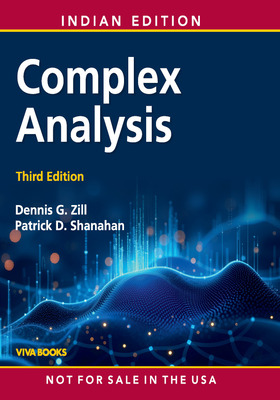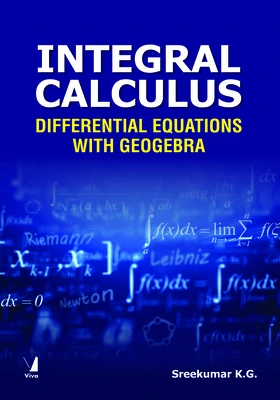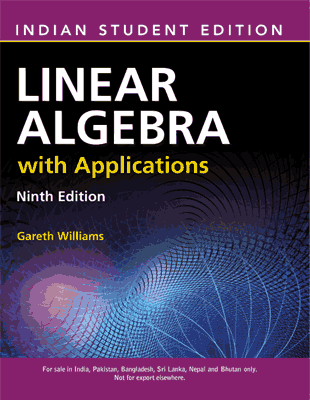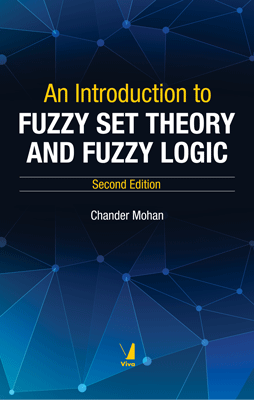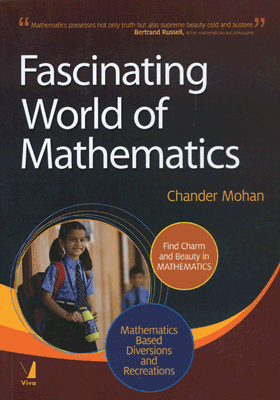
The History of Mathematics
The History of Mathematics
6 Volume Set
₹8,995.50 ₹9,995.00 Save: ₹999.50 (10%)
Go to cart-
Out of Stock
ISBN: 9788130931715
Bind: Hardbound
Year: 2015
Pages: 1564
Size: 153 x 229 mm
Publisher: Facts On File Inc.
Published in India by: Viva Books
Exclusive Distributors: Viva Books
Sales Territory: India, Nepal, Pakistan, Bangladesh, Sri Lanka
Review:
... attractive, well-written, and easy-to-understand for high school and college collections. The volumes are comprehensive but also include necessary basic information for math students.. . a staple for reference sections everywhere. Recommended.
—Library Media Connection
Contemporary mathematics is often extremely abstract, and the important questions mathematicians concern themselves with can sometimes be difficult to describe to the interested non-specialist. Perhaps this is one reason that so many histories of mathematics give little attention to the last hundred years of discovery-despite the fact that this period has probably been the most productive in the history of mathematics.
Now in full color, The History of Mathematics set features five revised editions and one new volume that cover a significant portion of recent mathematical history as well as its origins. From the in-depth interviews with prominent mathematicians (one per volume), readers will develop an appreciation for current work in mathematics as well as an interest in the future of this remarkable subject. This set will be invaluable to anyone interested in this fascinating topic and how it applies to everyday situation.
Algebra, Second Edition
Sets, Symbols, and the Language of Thought
Description:
For thousands of years, algebra consisted solely of expanding the list of problem-solving algorithms-a list of procedures similar in concept to the quadratic formula. But much of contemporary algebra focuses on identifying and describing the logical structures upon which mathematics is built. It is now clear that identifying and exploiting these structures is just as important for mathematical and scientific progress as the development of new algorithms.
Algebra, Revised Editiondescribes the history of both strands of algebraic thought. This updated resource describes some of the earliest progress in algebra as well as some of the mathematicians in Mesopotamia, Egypt, China, and Greece who contributed to this early period. It goes on to explore the many breakthroughs in algebraic techniques as well as how letters were used to represent numbers. New material has been added to the chapter on “modern” algebra, a type of mathematical research that continues to occupy the attention of many mathematicians today.
Contents:
Preface • Acknowledgments • Introduction
Chapter 1: The First Algebras • Mesopotamia: The Beginnings of Algebra • Mesopotamians and Second-Degree Equations • The Mesopotamians and Indeterminate Equations • Clay Tablets and Electronic Calculators • Egyptian Algebra • Chinese Algebra • Rhetorical Algebra
Chapter 2: Greek Algebra • The Discovery of the Pythagoreans • The Incommensurability of v2 • Geometric Algebra • Algebra Made Visible • Diophantus of Alexandria
Chapter 3: Algebra from India to Northern Africa” Brahmagupta and the New Algebra • Mahavira • Bhaskara and the End of an Era • Poetry and Algebra • Islamic Mathematics • Al-Khwa”“rizmi”“ and a New Concept of Algebra • A Problem and a Solution • Omar Khayy”“m, Islamic Algebra at Its Best • Leonardo of Pisa
Chapter 4: Algebra as a Theory of Equations” The New Algorithms • Algebra as a Tool in Science • Fran”“ois Vi”“te, Algebra as a Symbolic Language • Thomas Harriot • Albert Girard • The Fundamental Theorem of Algebra • The Importance of Polynomials
Chapter 5: Algebra in Geometry and Analysis” Ren”“ Descartes • Descartes on Multiplication • Pierre de Fermat • Fermat's Last Theorem • The New Approach • Polar Coordinates
Chapter 6: The Search for New Structures” Niels Henrik Abel • ““variste Galois • Galois Theory and the Doubling of the Cube • Doubling the Cube with a Straightedge and Compass Is Impossible • Algebraic Structures • The Importance of Group Theory
Chapter 7: The Laws of Thought • Aristotle • George Boole and the Laws of Thought • Boolean Algebra • Aristotle and Boole • Refining and Extending Boolean Algebra • Boolean Algebra and Computers
Chapter 8: The Theory of Matrices and Determinants” Early Ideas • Spectral Theory • The Theory of Matrices • Matrix Multiplication • Emmy Noether and the Theory of Rings • Nicolas Bourbaki and Mathematical Structure • The Problem Solvers
Conclusion
• Afterword: An Interview with Dr. Bonita Saunders on the Digital Library of Mathematical Functions • Chronology • Glossary • Further Resources • Index
Beyond Geometry, Second Edition
A New Mathematics of Space and Form
Description:
For millennia, Euclidean geometry, the geometry of the ancient Greeks, set the standard for rigor in mathematics-it was the only branch of mathematics that had been developed axiomatically, or based on a system of axioms. This form of geometry was the language of mathematics. But early in the 19th century, mathematicians developed geometries very different from Euclid's simply by choosing axioms different from those used by Euclid. These new geometries were internally consistent in the sense that mathematicians could find no theorems arising within these geometries that could be proven both true and false.
Beyond Geometry describes how set-theoretic topology developed and why it now occupies a central place in mathematics. Describing axiomatic method as well as providing a definition of what a geometric property is, this new resource examines how early analysts incorporated geometric thinking into their development of the calculus. It also looks at the various mathematicians who struggled to develop a new conceptual framework for mathematics and examines one of the sub-disciplines of set-theoretic topology called dimension theory.
Contents:
Preface • Acknowledgments • Introduction
Chapter 1: Topology: A Prehistory • Euclid's Axioms” Euclidean Transformations • The Beginnings of Calculus • Counterexample : A Continuous Function That Is Not Everywhere Differentiable
Chapter 2: A Failure of Intuition • An Alternative to Euclid's Axioms • Bernhard Bolzano and Further Limitations on Geometric Reasoning • Counterexample : A Continuous Nowhere Differentiable Function
Chapter 3: A New Mathematical Landscape” Richard Dedekind and the Continuum • Georg Cantor and Set Theory • Counterexample : Peano's Space-Filling Curve • Different-Looking Sets, Similar Properties: Part I • Different-Looking Sets, Similar Properties: Part II
Chapter 4: The First Topological Spaces • Felix Hausdorff and the First Abstract Topological Spaces • Topological Transformations • The Role of Examples and Counterexamples in Topology • Counterexample : Sierpi”“s Gasket
Chapter 5: The Standard Axioms and Three Topological Properties” The Standard Axioms • Topological Property: Compactness • Topological Property: Regularity • The Role of Rigor in Mathematics • Topological Property : Connectedness
Chapter 6: Schools of Topology • The Polish School • Topology at the University of Texas • The Moore Method • Topology in Japan
Chapter 7: Dimension Theory • Continuum Theory • Inductive Definitions of Dimension • A Noninductive Definition of Dimension and More Consequences of Dimension Theory • Still Another Concept of Dimension: The Hausdorff Dimension
Chapter 8: Topology and the Foundations of Modern Mathematics” Topology and the Language of Mathematics • Topology in Analysis • Other Kinds of Topology, or What Happened to the K”“nigsberg Bridge Problem” • Mathematical Structures and Topology • Conclusion • Afterword: An Interview with Professor Scott Williams on the Nature of Topology and the Goals of Topological Research
Chronology • Glossary • Further Resources • Index
Geometry, Second Edition
The Language of Space and Form
Description:
Geometric questions are frequently expressed in a language of points, lines, planes, curves, and surfaces, but humanity has always been interested in questions of line and form. Cave paintings from Lascaux, France, made during the last ice age show remarkably sophisticated pictures of wild animals. Created during the Stone Age, humans were hunting mammoths when these pictures were painted. The first written languages lay 10,000 years in the future, and yet the cave paintings reveal artists who were wonderfully sensitive in their use of line and form. Does this mean that they knew geometry” And if they did, what part of the mathematical subject of geometry did they know”
Geometry, Revised Editiondescribes geometry in antiquity. Beginning with a brief description of some of the geometry that preceded the geometry of the Greeks, it takes up the story of geometry during the European Renaissance as well as the significant mathematical progress in other areas of the world. It also discusses the analytic geometry of Rene Descartes and Pierre Fermat, the alternative coordinate systems invented by Isaac Newton, and the solid geometry of Leonhard Euler. Also included is an overview of the geometry of one of the most successful mathematicians of the 19th century, Bernhard Riemann, who created both higher dimensional geometry and geometry that is intrinsic to surfaces. The theory of relativity is also examined in great detail in this full-color resource.
Contents:
Preface • Acknowledgments • Introduction
Part One: Geometry in Antiquity
Chapter 1: Geometry before the Greeks
Chapter 2: Early Greek Geometry • Math without Numbers • The Pythagoreans • The Golden Section • Geometry in Athens
Chapter 3: Major Mathematical Works of Greek Geometry” Elements by Euclid of Alexandria • Euclid Reexamined • The Method, On the Sphere and Cylinder, and Other Works by Archimedes • Conics by Apollonius of Perga • Investigating Conic Sections • Collection by Pappus of Alexandria • The End of the Greek Mathematical Tradition
Part Two: New Geometries
Chapter 4: Mathematics and Art during the Renaissance • Leonardo da Vinci • Albrecht D”“rer
Chapter 5: The First Theorems • Marin Mersenne
Chapter 6: Projective Geometry Rediscovered” Monge's Students • Projective Geometry as a Mature Branch of Mathematics • Groups and Geometry • Projective Geometry, an Application
Chapter 7: A Non-Euclidean Geometry • Finite Geometries • Is Our World Euclidean”
Part Three: Coordinate Geometry
Chapter 8: The Beginnings of Analytic Geometry” Menaechmus and Apollonius of Perga • Ren”“ Descartes • Algebraic Notation in Geometry • Pierre de Fermat • The Pythagorean Theorem and Cartesian Coordinates
Chapter 9: Calculus and Analytic Geometry • Isaac Newton, the New Geometry, and the Old • Bipolar Coordinates • Leonhard Euler and Solid Geometry
Chapter 10: Differential Geometry • Georg Friedrich Bernhard Riemann • Geometry on Spheres
Chapter 11: The Shape of Space and Time” Geometry and the Special Theory of Relativity • The Pythagorean Theorem and Special Relativity • The Geometry and Science of “Ordinary” Surfaces • Emmy Noether and Symmetry
Chapter 12: Infinite-Dimensional Geometries” David Hilbert • Stefan Banach • The Banach Tarski Paradox • Conclusion • Afterword: Interview with Professor Krystyna Kuperberg on Geometry, Intuition, and History
“ Chronology • Glossary • Further Resources • Index
Mathematics and the Laws of Nature, Revised Edition
Developing the Language of Science
Description:
Mathematical methods are useful in understanding nature. Though many people accept this view without question, it is usually an act of faith. History demonstrates that nature's most fundamental and important patterns are neither easy to recognize nor easy to harness for the common good. The development of the concepts and methods necessary to deduce new knowledge of nature from already established results-and the development of methods to separate correct results from incorrect ones-remains a work-inprogress. Attempts to create these methods are documented in the earliest written records, and efforts to refine these methods and develop new ones continue to this day.
Mathematics and the Laws of Nature, Revised Edition describes the evolution of the idea that nature can be described in the language of mathematics. Colorful chapters explore the earliest attempts to apply deductive methods to the study of the natural world. This revised resource goes on to examine the development of classical conservation laws, including the conservation of momentum, the conservation of mass, and the conservation of energy. Chapters have been updated and revised to reflect recent information, including the mathematical pioneers who introduced new ideas about what it meant to solve an equation and the influential efforts of the mathematicians of the former Soviet Union.
Contents:
Preface • Acknowledgments • Introduction
Chapter 1: The Preliminaries • Mathematics versus Science and Engineering • The Mesopotamians • The Ancient Sky • Recording the Stars to Predict the Future • The Astronomical Calculations • The Tablets
Chapter 2: Mathematics and Science in Ancient Greece” Ratios and the Measure of the Universe • A Geometry of the Universe • A Rotating Earth • Archimedes: Fusing Physics with Mathematics • The Law of the Lever
Chapter 3: A Period of Transition” Nicholas Oresme • Nicolaus Copernicus • Johannes Kepler • Platonic Solids • Leonardo da Vinci and the Equation of Continuity • Proving Leonardo's Equation of Continuity
Chapter 4: New Sciences • Simon Stevin • Stevin and Music • Galileo Galilei • Fermat, Descartes, and Wallis
Chapter 5: Mathematics and the Law of Conservation of Momentum • The Laws of Motion • The Discovery of Neptune • Limits on the Applicability of Newton's Laws
Chapter 6: Mathematics and the Law of Conservation of Mass • Leonhard Euler and the Science of Fluid Dynamics • The Mathematics of Combustion • Limits on the Applicability of Conservation of Mass
Chapter 7: Mathematics and the Laws of Thermodynamics” A Failed Conservation Law • Sadi Carnot • Calculating the Efficiency of a Carnot Engine • James Prescott Joule • The First Law of Thermodynamics • The Second Law of Thermodynamics • Entropy • Models and Reality
Chapter 8: New Insights into Conservation Laws • Emmy Noether • Sergey L”vovich Sobolev • Olga Oleinik • The Role of Computers
Chapter 9: Natural Laws and Randomness • Gregor Mendel • Population Genetics • The Limits of Predictability • Differential Equations and Random Processes
Conclusion • Afterword: An Interview with Dr. Renate Hagedorn on Meteorology, Modeling, and the Quantification of Uncertainty • Chronology • Glossary • Further Resources • Index
Numbers, Second Edition
Computers, Philosophers, and the Search for Meaning
Description:
Progress has often been slow when it comes to understanding numbers. Numbers provide a rich source of exotic ideas, philosophical and mathematical, but because many of us are so invested in the familiar, we have often resisted ideas about numbers that are new and unfamiliar.
Numbers, Revised Edition deals with numbers from the point of view of computation, beginning with the earliest number concepts from ancient Mesopotamian, Chinese, and Mayan mathematicians. It describes the origin and diffusion of Arabic numerals, and it concludes with a discussion of the way that the number system is represented within computers. A new section describes some of the IEEE standards for floating point arithmetic, and a more detailed discussion of the work of Godel and Turing has been added to this edition. Irrational numbers and the idea of infinity are also examined in this in-depth guide.
Contents:
Preface • Acknowledgments • Introduction
Part One: Numbers for Computation
Chapter 1: The First Problems
Chapter 2: Early Counting Systems” A Mesopotamian Education • The Mesopotamian Number System • Mesopotamian Mathematics Homework • The Egyptian Number System • A Problem from the Ahmes Papyrus • The Mayan Number System • The Chinese Number System • A Problem from the Nine Chapters
Chapter 3: Our Place Value Number System • Explaining the New System
Chapter 4: Analytical Engines • Calculators, Computers, and the Human Imagination • Charles Babbage and the Analytical Engine • An Early Electronic Representation of Our Number System • Floating-Point Representation • Floating-Point Arithmetic and Your Calculator • More about Computers and Numbers
Part Two: Extending the Idea of Number
Chapter 5: An Evolving Concept of Number • Irrational Numbers • Pythagoras of Samos • The Irrationality of v2
Chapter 6: Negative Numbers • Ancient Mathematical Texts from the Indian Subcontinent Out of India
Chapter 7: Algebraic Numbers • Tartaglia, Ferrari, and Cardano • Girard and Wallis • Euler and d”Alembert • The Debate over “Fictitious” Numbers • Complex Numbers: A Modern View • Using Complex Numbers
Chapter 8: Transcendental Numbers and the Search for Meaning • Dedekind and the Real Number Line
Part Three: The Problem of Infinity
Chapter 9: Early Insights
Chapter 10: Galileo and Bolzano • Infinity as a Number • The Life and Opinions of Tristram Shandy, Gentleman
Chapter 11: Georg Cantor and the Logic of the Infinite” There Are No More Rational Numbers Than Natural Numbers • There Are More Real Numbers Than Natural Numbers • The Russell Paradox • Resolving the Russell Paradox
Chapter 12: Cantor's Legacy • The Peano Axioms • Kurt G”“del and the Axiomatic Method • Alan Turing and His Machine • Formal Languages Today • A New Type of Number
Conclusion • Afterword: The Nature of Mathematics”““an Interview with Professor Karlis Podnieks • Chronology • Glossary • Further Resources • Index
Probability and Statistics, Revised Edition
The Science of Uncertainty
Description:
Concepts from the fields of probability and statistics pervade our thinking-even those of us who believe in the existence of luck-and we routinely express ourselves using language borrowed from various branches of mathematics. News reports, weather reports, and even sports reports are some examples of the probabilistic and statistical thinking that seeps into our everyday lives.
Probability and Statistics, Revised Edition deals with the history of probability, describing the modern concept of randomness and examining “pre-probabilistic” ideas of what most people today would characterize as randomness. This revised book documents some historically important early uses of probability to illustrate some very important probabilistic questions. It goes on to explore statistics and the generations of mathematicians and non-mathematicians who began to address problems in statistical analysis, including the statistical structure of data sets as well as the theory of sampling and the characterization of the nature of variation. The final chapter describes the role of statistics in the development, testing, licensure, and subsequent study of vaccines. A new chapter has been added that gives special attention to vaccines for measles, polio, pertussis, and rubella.
Contents:
Preface • Acknowledgments • Introduction
Part One: Probability
Chapter 1: The Idea of Randomness” Randomness before the Theory of Probability • Early Difficulties in Developing a Theory of Randomness • Randomness and Religion Today in Burkina Faso
Chapter 2: The Nature of Chance” Cardano's Mistake • Cardano on Luck and Math • Galileo Galilei • Pierre de Fermat and Blaise Pascal • The Division of Stakes, an Alternative Interpretation • Christiaan Huygens • Jacob Bernoulli • Abraham de Moivre • De Moivre on Math and Luck • The Bell Curve
Chapter 3: Surprising Insights into Probability and Its Uses” Thomas Bayes and Inverse Probability • Buffon and the Needle Problem • Daniel Bernoulli and Smallpox • Jean le Rond d”Alembert and the Evaluation of Risk • Leonhard Euler and Lotteries • Smallpox, Probability, and the Public Health Revisited
Chapter 4: Randomness in a Deterministic Universe • Sim”“on-Denis Poisson • The Poisson Distribution
Chapter 5: Random Processes • James Clerk Maxwell • Brownian Motion Revisited • Markov Processes • A Markov Chain
Chapter 6: Probability as a Mathematical Discipline • Theory and Practice • Probabilistic Risk Assessment
Chapter 7: Probability and Risk, an Application • Credit Default Swaps • Information Asymmetries and CDSs • AIG and the Worst Economic Crisis since the Great Depression
Part Two: Statistics
Introduction • The Age of Information
Chapter 8: The Beginnings of Statistics • John Graunt • Edmund Halley • Breslau Mortality Table • Insurance
Chapter 9: Data Analysis and the Problem of Precision • The Misuse of Statistics
Chapter 10: The Birth of Modern Statistics • Karl Pearson • R. A. Fisher
Chapter 11: The Theory of Sampling • The Problem • Walter Shewhart and Statistical Quality Control • William Edwards Deming
Chapter 12: Statistics and Vaccinations” Vaccination Concepts • The Statistics of Vaccine Tests • Additional Studies • The National Vaccine Injury Compensation Program • Vaccines and Autism • Conclusion
Afterword: An Exclusive Interview with Dr. Michael Stamatelatos on the Quantification of Risk
Chronology • Glossary • Further Resources • Index
About the Author:
John Tabak, Ph.D., performed graduate work at the State University of New York at Stony Brook and received a degree in mathematics from Rensselaer Polytechnic Institute. He is the author of Facts On File's Energy and the Environment set as well as Significant Gestures: A History of American Sign Language, a social and scientific history of one of North America's most unique languages.
